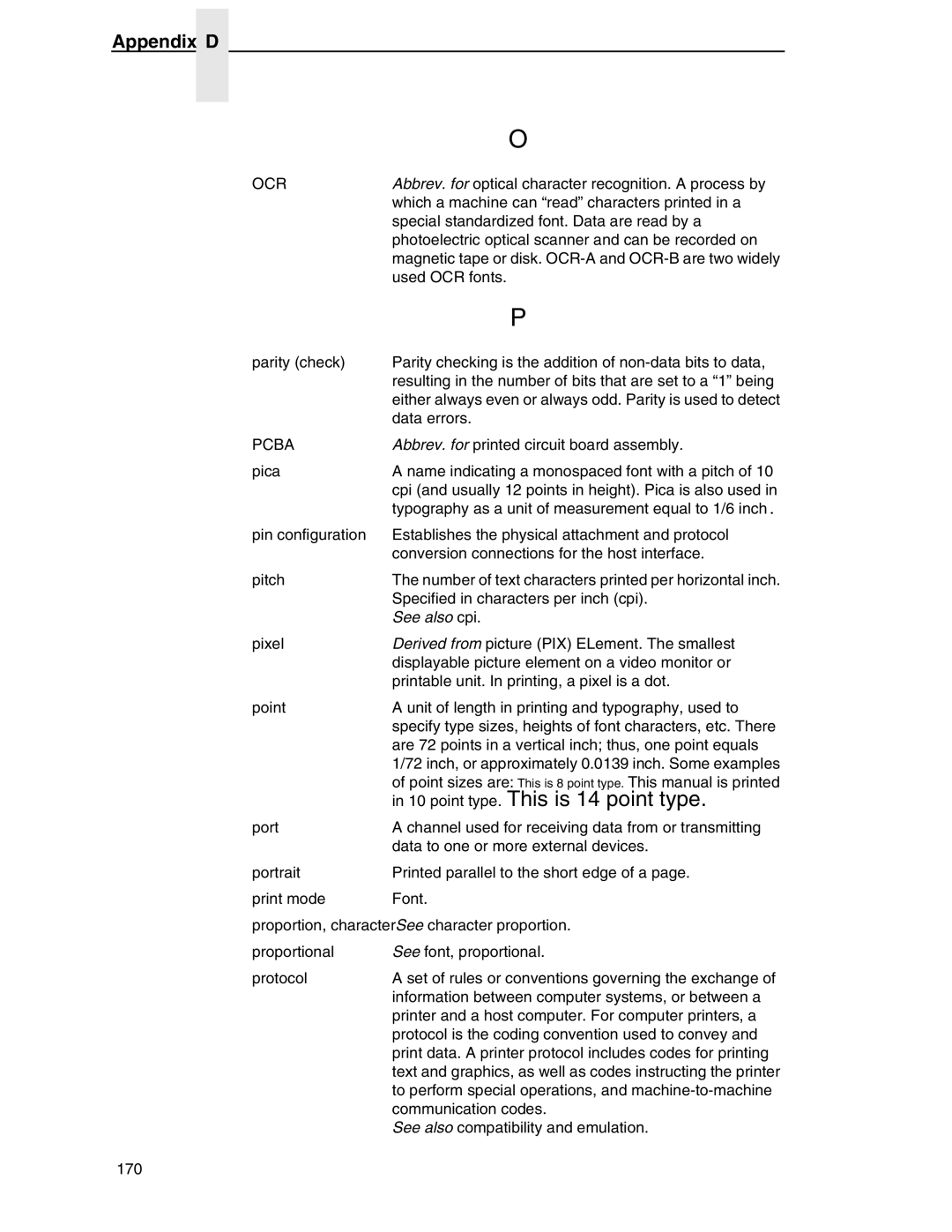
Appendix D
| O |
OCR | Abbrev. for optical character recognition. A process by |
| which a machine can “read” characters printed in a |
| special standardized font. Data are read by a |
| photoelectric optical scanner and can be recorded on |
| magnetic tape or disk. |
| used OCR fonts. |
| P |
parity (check) | Parity checking is the addition of |
| resulting in the number of bits that are set to a “1” being |
| either always even or always odd. Parity is used to detect |
| data errors. |
PCBA | Abbrev. for printed circuit board assembly. |
pica | A name indicating a monospaced font with a pitch of 10 |
| cpi (and usually 12 points in height). Pica is also used in |
| typography as a unit of measurement equal to 1/6 inch. |
pin configuration | Establishes the physical attachment and protocol |
| conversion connections for the host interface. |
pitch | The number of text characters printed per horizontal inch. |
| Specified in characters per inch (cpi). |
| See also cpi. |
pixel | Derived from picture (PIX) ELement. The smallest |
| displayable picture element on a video monitor or |
| printable unit. In printing, a pixel is a dot. |
point | A unit of length in printing and typography, used to |
| specify type sizes, heights of font characters, etc. There |
| are 72 points in a vertical inch; thus, one point equals |
| 1/72 inch, or approximately 0.0139 inch. Some examples |
| of point sizes are: This is 8 point type. This manual is printed |
| in 10 point type. This is 14 point type. |
port | A channel used for receiving data from or transmitting |
| data to one or more external devices. |
portrait | Printed parallel to the short edge of a page. |
print mode | Font. |
proportion, characterSee character proportion. | |
proportional | See font, proportional. |
protocol | A set of rules or conventions governing the exchange of |
| information between computer systems, or between a |
| printer and a host computer. For computer printers, a |
| protocol is the coding convention used to convey and |
| print data. A printer protocol includes codes for printing |
| text and graphics, as well as codes instructing the printer |
| to perform special operations, and |
| communication codes. |
| See also compatibility and emulation. |
170
